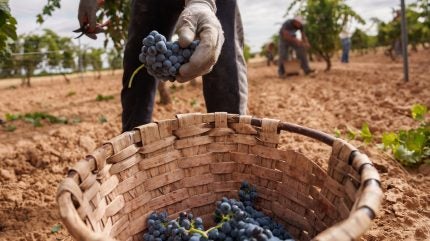
This year could be one to remember – but for all the wrong reasons. I’m not – despite the imminent return of Tariff Man, aka Donald Trump – necessarily talking about the recent US presidential election but rather the news that 2024 is pretty much certain to be the hottest year on record. The fact this revelation coincides with the holding of COP29 in Azerbaijan is a particularly unhappy coincidence.
As countries fret about limiting global warming to 1.5°C above pre-industrial levels, it looks as if that horse may already have bolted. This year is likely to be more than 1.55°C above those levels, following 2023 at +1.48°C. We’ll have to wait longer to see if that long-term target has already been missed but the prospects are far from promising.
If you don’t believe that the cold, hard numbers have a real-world effect, then you haven’t been watching the news lately. Around the globe, extreme weather events are claiming lives and destroying livelihoods, more frequently than at any point in recorded history. The shocking floods in Spain are merely the latest manifestation.
The wine industry, like any agricultural sector, knows this better than most. Most of Spain has endured drought conditions for the past few years, decimating Cava production and leading Henkell Freixenet to reduce staff working hours earlier this year as a result. Wildfires have ravaged California, Oregon and parts of Australia; severe frosts have wrought havoc in British Columbia.
The many wineries impacted trying to do the right thing are often being punished twice.
These events would be hard enough to deal with at the best of times. But the wine industry is not enjoying the best of times; quite the opposite. Consumption is falling around the world, companies are struggling to stay afloat and grapes are being left unpicked, vineyards grubbed up to make way for something profitable.
The many wineries impacted by these weather events that are trying to do the right thing – measuring and reducing their carbon emissions, employing regenerative techniques in their vineyards to create resilience and lock in carbon – are often being punished twice.
First, by the weather events themselves. In January this year, temperatures in the Okanagan Valley in British Columbia dropped to -27°C, wiping out not just the 2024 crop but killing large numbers of vines. Higher-altitude vineyards, typically protected by the insulation of heavy snow cover, have seen 50% vine mortality because the cripplingly low temperatures have been accompanied by historically small amounts of snowfall.
Secondly, by the necessary reaction to those events. I know of one winery – and I suspect they’re not alone – that was forced to import grapes from across the US border in order to have something to sell this year. You have to keep the lights on, even if those lights are powered by photovoltaic solar panels on the winery roof.
Assessing the damage to the vineyards, then taking the necessary steps to replant vines, also leads to an inevitable spike in carbon emissions. As the work in the vineyard intensifies, electric vehicles are not necessarily up to the job – or at least not yet. It’s a particularly dark irony that a (probably) climate change-inspired weather event leads to a short-term spike in carbon emissions for even the most environmentally aware business.
If there is a bright spark amid the gloom, it’s the opportunity that wineries can take in replanting: designing new vineyards with sustainability front and centre, building in regenerative practices that are not only better for the planet, but also create greater resilience against future weather events.
Replanting vineyards, however, isn’t just emissions-intensive; it’s also expensive. Doing the right thing here isn’t simply a moral question – it’s about having the necessary financial wherewithal. In large parts of the wine world, there will be growers and wineries that just can’t afford to think about the long term because, if they do, there may not be a business to save in a few years’ time.
There’s no easy answer here. The wine industry is famously fragmented, which can leave individuals isolated and vulnerable but it also makes collective will and collective action all the more vital. Sharing knowledge and experience is key to the wine industry’s future.
People are trying to act. Check out the work undertaken by International Wineries for Climate Action (IWCA), co-founded by two large, family-owned wine businesses that are not scared to do the right thing – Familia Torres and Jackson Family Wines. The Porto Protocol and Sustainable Wine Roundtable are further examples of organisations also fighting the good fight.
But much, much more needs to be done. IWCA counts such heavyweights as Sogrape, Constellation Brands, VSPT Wine Group and Hill-Smith Family Estates among its members but collectively it only accounts for around 3.5% of global wine production. There’s an urgent need for more companies to join these initiatives – and for these separate initiatives to coalesce in order to bring meaningful change.
Talk to viticulturists about the impacts of climate change and, along with the terrifying tales of hail, frost and fire, they’ll also describe, sometimes almost with a sense of awe, of the ability of the humble grape vine to adapt to this changing world. The vine, you can be sure, will survive what our planet is enduring; wine businesses that don’t confront reality may well suffer a harsher fate.



